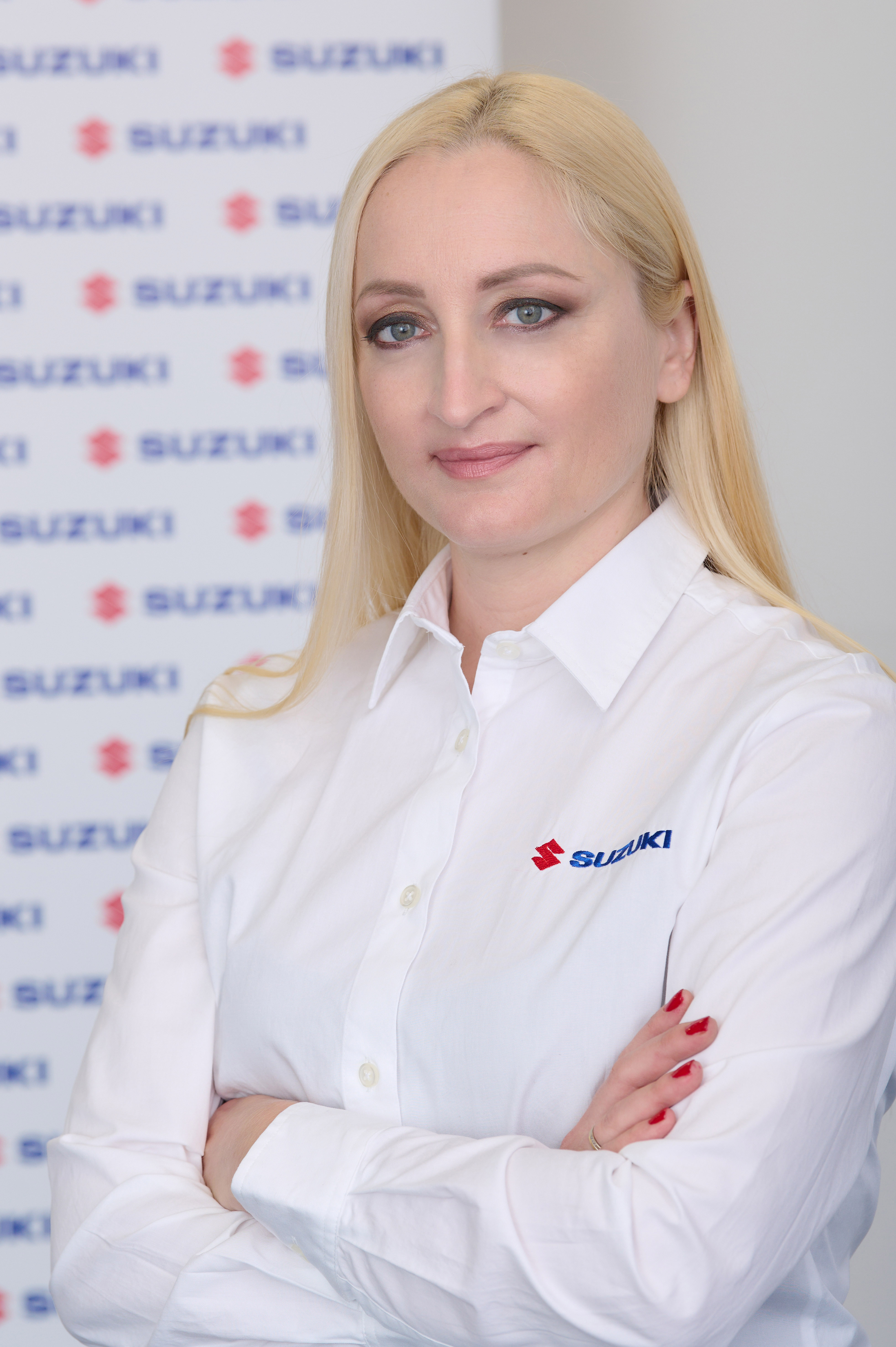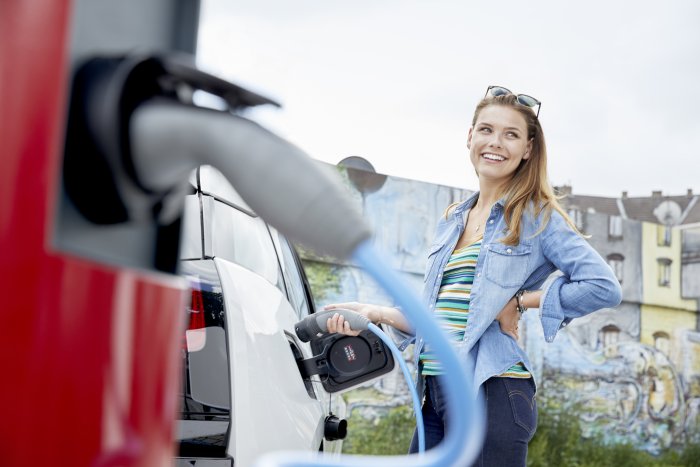Automotives Prepare for Greener Future, Face Serious Supply Issues

Zsuzsanna Bonnár-Csonka
The Hungarian automotive sector is undergoing a significant transformation, with more environmentally friendly and sustainable vehicle manufacturing on the rise. However, global supply chain issues are hitting the industry hard. Just as it was switching into a more optimistic post-pandemic mode, the war in Ukraine erupted.
In line with the European Union’s commitment to global climate action under the Paris Agreement, the bloc is targeting becoming climate-neutral by 2050. In less than three decades, national economies are supposed to operate with net-zero greenhouse gas emissions, meaning automotive companies in Hungary, as elsewhere in the EU, have started improving operations.
“The Suzuki Group and Magyar Suzuki are committed to a greener future and see great potential in automation. It is important for our company to use the latest and best technologies to robotize as much as possible to ensure high brand quality,” Zsuzsanna Bonnár-Csonka, head of corporate communication and CSR at Magyar Suzuki, tells the Budapest Business Journal.
Since 2016, the Hungarian operation has been undertaking a multi-stage innovation process, in which the firm is implementing significant development of robotics production technology.
“By 2050, our group wants to operate with carbon-neutral plants and product portfolio all over the world, and this is also true for Magyar Suzuki Corporation,” Bonnár-Csonka says.
In accordance with EU regulations on emissions, Magyar Suzuki, therefore, started series production of hybrid versions of the Vitara and SX4 S-Cross models at the Hungarian Esztergom plant in 2019. A year later, 65% of the Hungarian production was already hybrid.
“The hybrid range manufactured in Esztergom will expand further this year: the (strong) hybrid version of the Vitara arrived at the beginning of the year and the new (strong) hybrid version of S-Cross will arrive in the middle of this year,” Bonnár-Csonka adds.
Hydrogen Bus
Mobility is seeing an increasing share of greener transportation options country-wide. Early in February, the Hungarian Motorsport and Green Mobility Development Agency (HUMDA) provided state-owned long-haul public transport services provider Volánbusz with an emission-free, hydrogen-powered bus. The Solaris Urbino 12 is the first hydrogen-powered vehicle in Hungary’s public transport fleet. The launch was part of a pilot program planned to end on March 6.
The hydrogen vehicle has a passenger capacity of 89, connecting Budapest to Vecsés, in the agglomeration of the capital near the national Ferenc Liszt international airport. The distance is approximately 20 kilometers in air travel. Linde Gáz Magyarország Zrt. supplies the green hydrogen that fuels the bus.
“Decreasing carbon-dioxide emissions is crucial for the future of our environment. As transport constitutes one-fifth of Hungary’s carbon-dioxide emissions, we launched the Green Bus Program to decrease harmful emissions in public transport to contribute to meeting the 2050 climate targets,” said State Secretary for Energy and Climate Policy Attila Steiner, at the presentation of the bus in early February.
While the automotive sector focuses on reducing emissions, further challenges face the industry.
“So far, 2022, similarly to the second half of 2021, holds many challenges for us, including supply chain difficulties,” Bonnár-Csonka tells the BBJ.
Recent global supply chain issues have made sourcing spare parts and automotive-related technology difficult. The Russian invasion and war in Ukraine have only exacerbated that situation.
The entire automotive industry has been shaken by the lack of semiconductors, a piece of technology that enables most innovations in vehicle development and is considered the catalyst for the growth driving consumer demand.
“Responding to the semiconductor shortage, which our company is still expecting this year, together with our electronic component suppliers, we are working on ensuring a continuous supply of our products,” Bonnár-Csonka says.
Magyar Suzuki resumed two-shift operations at its factory in Esztergom from Feb. 28 to ensure swift deliveries. The average waiting time for a new Suzuki car is several months. Depending on the specific vehicle level equipment, that can be shorter or longer.
“Deliveries of Magyar Suzuki Corporation to Russia and Ukraine were suspended from March,” Bonnár-Csonka says.
Supplies Impacted
It is not only Suzuki’s Hungarian operation that has experienced supply chain issues, though. Audi Hungaria Zrt. told the Budapest Business Journal that the war in Ukraine will have an impact on supplies. Nevertheless, Audi insisted that customers are currently unaffected.
“Audi Hungaria has several suppliers from Ukraine and, as a consequence, we expect the conflict to have an impact on our supply chains and therefore also on production,” the German giant said in response to direct questions put to it by budapestbusinessjournal.com, this paper’s online news service.
The Győr-based manufacturer told the BBJ that it is “constantly analyzing the situation and is in close contact with the Volkswagen Group and our suppliers.” As of the week beginning Feb. 28, the continuity of Audi Hungaria’s supply to its customers “is ensured,” the BBJ learned.
The short-term outlook for the automotive sector, however, is far from promising, despite a good start to the year. In January, the rebound of automotive manufacturers gave Hungarian industrial output a long-awaited growth injection. According to Central Statistical Office data, the sector rose by 8.9% year-on-year, the fastest rate since summer 2021.
ING Bank chief analyst Péter Virovácz told Hungarian state-owned news agency MTI that the automotive sector must have played an “extraordinarily big role” in the industrial output growth, beating expectations.
However, he added that shutdowns in Ukraine are causing trouble for Europe’s carmakers. Additionally, as Europe is reliant on Russia for sourcing raw materials such as aluminum, nickel and palladium, the national industrial sector is facing a difficult year ahead as its main engine, automotive, could be crippled by the armed conflict beyond Hungary’s Eastern borders.
Hybrid 101: Alphabet Soup for Motorists
In addition to traditional vehicles powered solely by the internal combustion engine (ICE, gradually to be outlawed) and electric vehicles (EVs), which operate using only electricity, there are three types of hybrid autos.
A full hybrid electric vehicle (FHEV) has both an internal combustion and an electric engine. It can run exclusively on either motor or a combination of both. An FHEV is not plugged into an electric car charger; the battery that powers the electric engine is charged by running the combustion engine.
A mild hybrid (MHEV), like an FHEV, has both an internal combustion and an electric engine, but in this case, both engines always work together.
A plug-in hybrid (PHEV) is connected to an electric vehicle charger to charge the battery that powers the electric engine. Therefore, as long as the battery lasts, it can run as an electric auto while having an internal combustion engine as a backup.
This article was first published in the Budapest Business Journal print issue of March 11, 2022.
SUPPORT THE BUDAPEST BUSINESS JOURNAL
Producing journalism that is worthy of the name is a costly business. For 27 years, the publishers, editors and reporters of the Budapest Business Journal have striven to bring you business news that works, information that you can trust, that is factual, accurate and presented without fear or favor.
Newspaper organizations across the globe have struggled to find a business model that allows them to continue to excel, without compromising their ability to perform. Most recently, some have experimented with the idea of involving their most important stakeholders, their readers.
We would like to offer that same opportunity to our readers. We would like to invite you to help us deliver the quality business journalism you require. Hit our Support the BBJ button and you can choose the how much and how often you send us your contributions.








